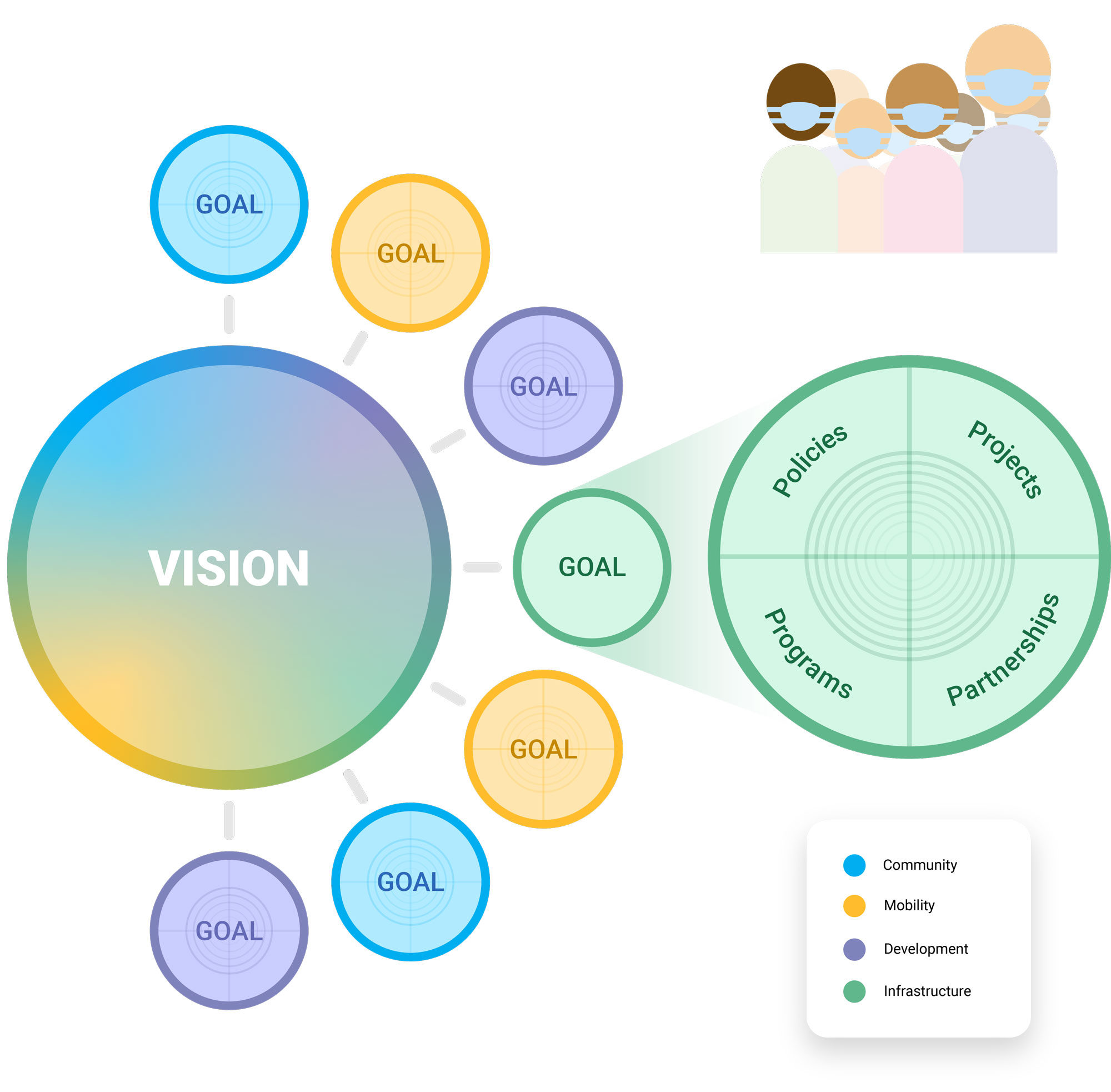Your input is essential to the planning process. Staff, the Steering Committee, and Action Teams are using your input to develop parts of the Oakland Plan.
Staff are working with the Steering Committee to create an initial draft Oakland Plan that will be released for public comment in early 2022. Please register for a free EngagePGH account and click the "Follow" button above to receive an email when the plan has been published.
Draft Strategies (Posted September 2021)
From fall 2020 through spring 2021, Action Teams met monthly to review input from the summer 2020 online open house which attracted 2,500 visitors who made 800 comments, reviewed data, and heard from local and national experts. Tours, workshops, and other events were held during this time to further inform the work of staff and the Action Teams. They generated the set of strategies which were released for public review in September 2021 on the project's EngagePGH page. Input was then sought from the broader Oakland community at eight in-person events through the fall with nearly 1,500 Oakland stakeholders in attendance. An online open house over the same period was visited by another 2,000 stakeholders who left nearly 500 comments. In October, Action Teams reviewed this input and made their final recommendations to the Steering Committee which is now working with staff to integrate public comments and strategies into the draft Oakland Plan which will be released in early 2022. A set of recommended changes to the Zoning Code to implement elements of the plan will be released at the same time.
Mapped Proposals
Context for Community Strategies
The Community Action Team focused its strategies on community programs and livability, cultural heritage and preservation, and public art, among other topics. An early goal of the group was to challenge the culture of institutional racism that has contributed to inequality and the wealth gap between white people and Black, Indigenous, and People of Color (BIPOC) as well as other marginalized communities.
Mapped Proposals - Community

What do you think? (Community)
Unmapped Proposals
New Ideas Map
Draft Goals (Posted March 2021)
From mid-August to mid-October of 2020, the Oakland Plan online open house attracted ~2,500 visitors who made ~800 comments. Staff immediately set to work reviewing the comments and working with the Steering Committee to develop an initial set of goals. The Steering Committee reviewed the goals at their meetings in November and December 2020 and staff incorporated their changes to create the draft goals below.
These goals relate to the topics of the Community Action Team and chapter of the future plan. You can also review draft goals for the Development, Mobility, and Infrastructure topics.
What is a Goal Statement?
What is a Goal Statement?
- Long-term outcomes organizations will achieve by implementing the plan's projects and programs.
- Aspirational in nature and express the neighborhood's collective desires and values for each topic of the plan.
- Goals are drafted with the Steering Committee. Discussions in Action Teams will likely influence the final goal statements.
- In terms of numbers, in a plan, there is one vision statement, a few goals for each topic, and many policies, projects, programs, and partnerships.
Parts of a Plan
Parts of a Plan

How Goals and Policies Differ
Where Goals and Policies Differ
- Where goals can have many elements that relate to a central theme, policies should have one clear focus.
- Policies set a preferred direction and describe what must be done to achieve the goals.
- They are specific enough that future projects can be assessed to determine if they would advance the values in the plan or run counter to them.
- Goals are drafted by the Steering Committee. Policies are drafted by the Action Teams.






